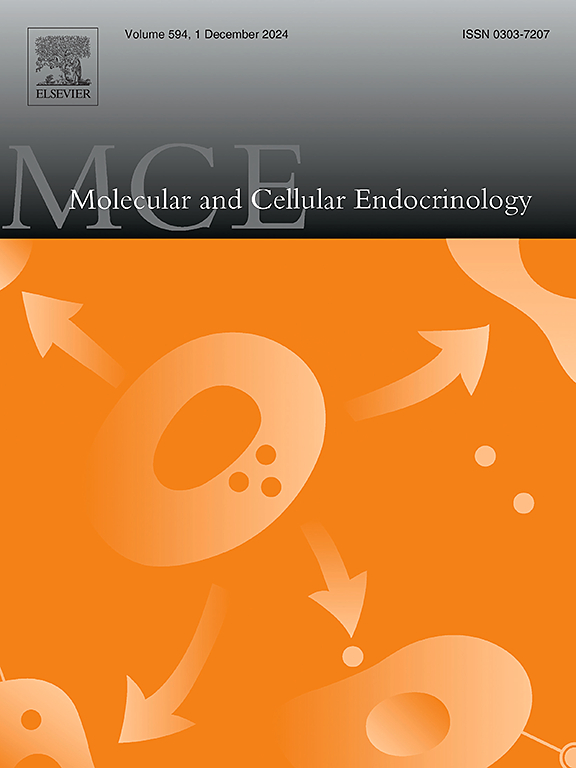Endocrine Disruptors Chemicals: Impacts of Bisphenol A, Tributyltin and Lead on Thyroid Function
IF 3.8
3区 医学
Q2 CELL BIOLOGY
引用次数: 0
Abstract
The large-scale industrial production characteristic of the last century led to an increase in man-made compounds and mobilization of natural compounds, many of which can accumulate in the environment and organisms due to their bioaccumulation and biomagnification properties. The endocrine system is especially vulnerable to these compounds that are known as endocrine disruptor chemicals (EDCs). Thyroid hormones (THs) are essential for normal development and growth, besides being the main regulators of basal metabolic rate. Thus, compounds able to affect THs synthesis, transport, and action could produce important deleterious effects, impacting the development of metabolic and endocrine diseases. Herein, we will review the main effects of EDCs on the thyroid axis, with special emphasis on the widely used substances bisphenol A (BPA), employed in the synthesis of polycarbonate plastics and epoxy resins; tributyltin (TBT), an organotin chemical substance widely used in several agro-industrial applications; and lead (Pb), a ubiquitous environmental and occupational polluting heavy metal. Exposure to these EDCs occurs mainly from the ingestion of contaminated food and beverages. Furthermore, there are few epidemiological studies evaluating human risk, and experimental studies employ different exposure models, making it difficult to integrate results. However, even low doses of these EDCs warn of thyrotoxicity. Since THs homeostasis is essential for health and humans are increasingly being exposed to EDCs, it is important to clarify which substances might act as thyroid hormone system disrupting chemicals and how they act in order to try to overcome their deleterious effects and limit the exposure to these compounds.

内分泌干扰物:双酚A、三丁基锡和铅对甲状腺功能的影响。
上个世纪大规模工业生产的特点导致了人造化合物的增加和天然化合物的动员,其中许多化合物由于其生物积累和生物放大特性而可以在环境和生物体中积累。内分泌系统特别容易受到这些被称为内分泌干扰物(EDCs)的化合物的影响。甲状腺激素(THs)是正常发育和生长所必需的,除了是基础代谢率的主要调节剂。因此,能够影响三萜类化合物的合成、转运和作用的化合物可能产生重要的有害影响,影响代谢和内分泌疾病的发展。在此,我们将回顾EDCs对甲状腺轴的主要影响,特别强调在合成聚碳酸酯塑料和环氧树脂中广泛使用的物质双酚A (BPA);三丁基锡(TBT),一种广泛应用于农工领域的有机锡化学物质;铅(Pb),一种普遍存在的环境和职业污染重金属。接触这些EDCs主要是由于摄入受污染的食品和饮料。此外,评估人类风险的流行病学研究很少,实验研究采用不同的暴露模型,因此难以整合结果。然而,即使是低剂量的EDCs也会引起甲状腺毒性。由于这种体内平衡对健康至关重要,而且人类越来越多地接触到EDCs,因此有必要澄清哪些物质可能作为甲状腺激素系统破坏化学物质,以及它们如何起作用,以便试图克服它们的有害影响并限制对这些化合物的接触。
本文章由计算机程序翻译,如有差异,请以英文原文为准。
求助全文
约1分钟内获得全文
求助全文
来源期刊

Molecular and Cellular Endocrinology
医学-内分泌学与代谢
CiteScore
9.00
自引率
2.40%
发文量
174
审稿时长
42 days
期刊介绍:
Molecular and Cellular Endocrinology was established in 1974 to meet the demand for integrated publication on all aspects related to the genetic and biochemical effects, synthesis and secretions of extracellular signals (hormones, neurotransmitters, etc.) and to the understanding of cellular regulatory mechanisms involved in hormonal control.
 求助内容:
求助内容: 应助结果提醒方式:
应助结果提醒方式:


